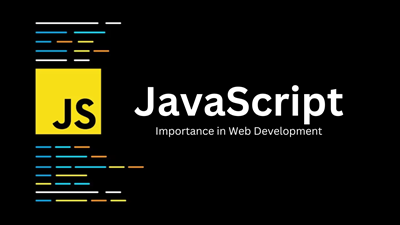
Master JavaScript: Comprehensive Courses for All Levels
Welcome to our comprehensive JavaScript course, designed to take you from a beginner to an advanced level in one of the most popular and versatile programming languages in the world. This course is perfect for anyone looking to start or advance their career in web development, software engineering, or any field that requires a solid understanding of JavaScript.
Course Overview
JavaScript is the backbone of modern web development, enabling dynamic and interactive web pages. Our course covers everything you need to know to master JavaScript, from the basics to advanced concepts. We believe in a hands-on approach to learning, so you’ll have plenty of opportunities to apply what you’ve learned through practical exercises and real-world projects.
What You'll Learn
Introduction to JavaScript:
- Understanding what JavaScript is and its role in web development.
- Setting up your development environment.
- Basic syntax, data types, and variables.
Control Structures:
- Conditional statements (if, else, switch).
- Loops (for, while, do-while).
Functions:
- Declaring and invoking functions.
- Understanding scope and closures.
- Arrow functions and higher-order functions.
Objects and Arrays:
- Creating and manipulating objects and arrays.
- Understanding prototypes and inheritance.
DOM Manipulation:
- Selecting and manipulating DOM elements.
- Event handling.
- Creating dynamic content.
Advanced Topics:
- Asynchronous JavaScript (callbacks, promises, async/await).
- Error handling and debugging.
- Modern JavaScript features (ES6+).
Frameworks and Libraries:
- Introduction to popular libraries and frameworks like React, Angular, and Vue.
- Understanding how to integrate them into your projects.
Project Work:
- Building real-world projects to solidify your knowledge.
- Collaborating on code and using version control systems like Git.
Course Benefits
- Interactive Learning: Our course is designed to be engaging and interactive. You’ll work on real projects that will help you understand the concepts better and build a portfolio to showcase your skills to potential employers.
- Expert Instructors: Learn from industry experts with years of experience in JavaScript and web development.
- Community Support: Join a community of like-minded learners. Share your progress, ask questions, and get feedback from peers and instructors.
- Flexible Schedule: Learn at your own pace with our self-paced modules. Whether you’re a full-time student, a working professional, or just looking to expand your skills, our course is designed to fit into your busy schedule.
- Career Advancement: JavaScript is an in-demand skill that can open up numerous career opportunities. Our course will prepare you for roles such as front-end developer, full-stack developer, and more.
Enrollment and Access
Enrolling in our JavaScript course is easy. Simply visit our website, create an account, and sign up for the course. Once enrolled, you’ll have lifetime access to all course materials, including video lectures, coding exercises, quizzes, and projects. You can also download resources and revisit them anytime to reinforce your learning.
Conclusion
Our JavaScript course is more than just a series of lessons – it’s a complete learning experience designed to equip you with the skills and knowledge you need to succeed in the world of web development. Join us today and take the first step towards becoming a JavaScript expert.








